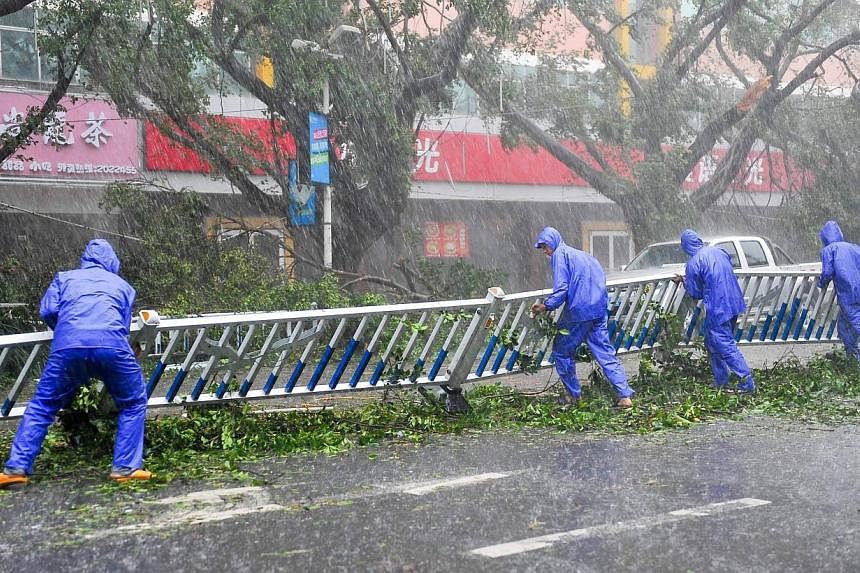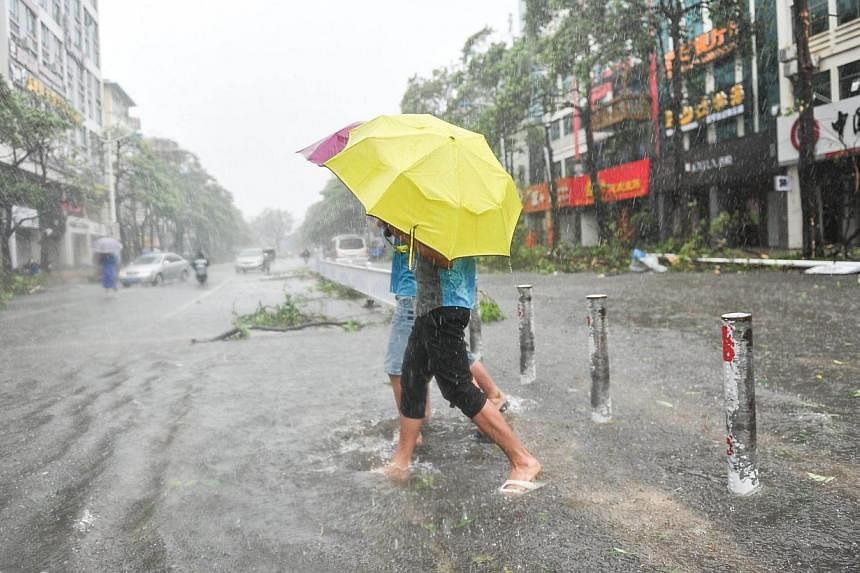BEIJING (REUTERS) - A super typhoon has killed eight people in China since making landfall on Friday afternoon, state media said on Saturday, after hitting parts of the Philippines and leaving 77 dead.
Typhoon Rammasun reached the southern Chinese island province of Hainan on Friday, before striking parts of the mainland later on Friday and early on Saturday, said the official Xinhua news agency.
The government had ordered an all-out effort to prevent loss of life from the typhoon, which is shaping up to be the strongest to hit southern China in more than 40 years.
It is expected to bring heavy rain throughout the weekend before moving south-west and weakening on Monday. Heavy rain is also expected over part of northern Vietnam.
The typhoon has hit several cities in the Chinese provinces of Guangxi, Guangdong and Hainan, tearing down trees and power lines and knocking out power grids.
In the Philippines, Rammasun badly hit the coconut-growing southern portion of the main island of Luzon, including the central Bicol region, which remained without power four days after it struck.
The storm damaged an estimated 5.85 billion Philippine pesos (S$166.4 million) worth of crops and infrastructure, including roads and bridges.
Typhoons are common at this time of year in the South China Sea, picking up strength from the warm waters and dissipating over land.
Flooding across a large swathe of southern China in the past week has already killed at least 34 people.





